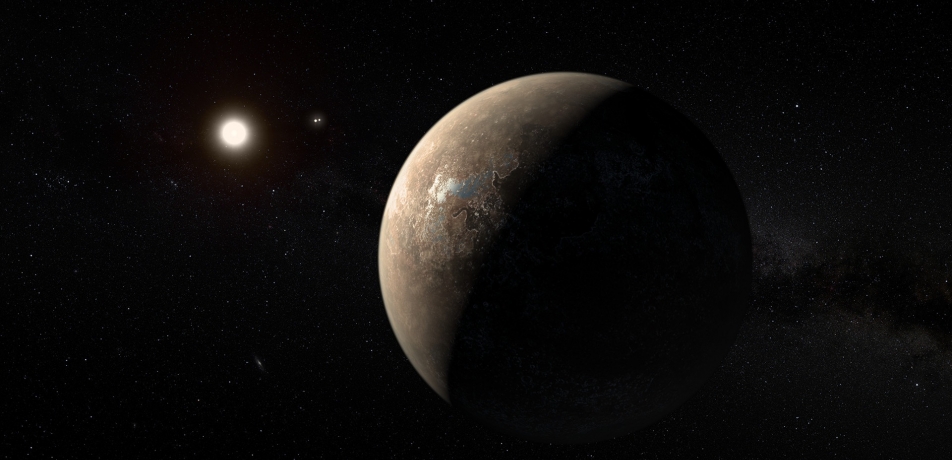A planet just like ours?
Briefs

An international astronomy team announced in August that a planet with a mass similar to that of Earth has been observed orbiting the star Proxima Centauri b, the closest star to our Sun, just over four light years (about 40 trillion km) away.
The collaboration of scientists from nine countries, known as the “Pale Red Dot” and led by Dr. Guillem Anglada-Escudé of the Queen Mary University of London, included the Weizmann Institute of Science’s Dr. Aviv Ofir in the group of Prof. Oded Aharonson of the Department of Earth and Planetary Sciences.
Proxima Centauri b is a red dwarf - a star with a diameter about one-seventh that of our Sun and much dimmer; it gives off only 1/600 the light of the Sun. The team’s calculations show that the planet has a mass of at least 1.3 times that of Earth, and its year—the time it takes to orbit its sun—is a little over 11 days.
It orbits very close to its sun—only 5 percent of the distance from Earth to our Sun—but since its sun is so dim, the temperatures on Proxima Centauri b may be relatively balmy, and liquid water could theoretically exist on its surface. The range of distances where the planet’s temperature permits liquid water is often referred to as “the habitable zone.”
Dr. Ofir says that it is not at all clear whether life as we know it could have evolved on the planet, and the subject is already the focus of intense debate.
The planet was discovered through measurements of the radial velocity of the star. Such measurements rely on the Doppler effect—the shift in wavelength as an object moves closer or away from the viewer. According to the team’s measurements, the star is moving at a speed of about a meter per second (or 3.6 km/h) towards and away from us.
Proxima Centauri has been studied for the past century, but only now have observations become sensitive enough to decisively detect the presence of this small planet. “We discovered the planet with an observatory in Chile. We can’t see Proxima Centauri from our observatories in Israel. It is well below the southern horizon, so it is unobservable from Israel all year round.”








